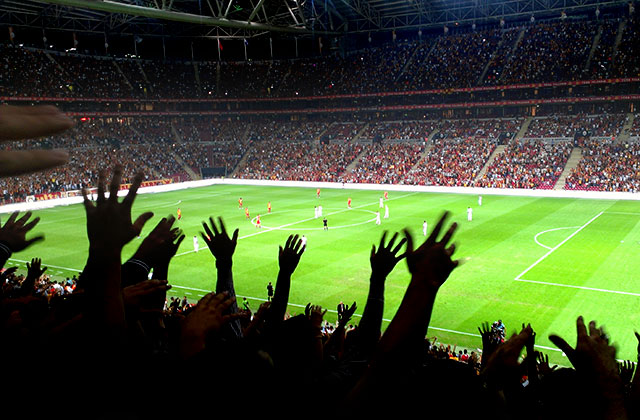The area of land where St. Andrew's now stands was initially a dumping ground right next to a railway line.
A band of gypsies lived there for some time and when they were asked to move off they are said to have laid a curse on the ground and the club - many think this still hangs over the club to this day!
Blues Director Harry Morris convinced his fellow board members that this piece of wasteland near St. Andrew's Church was the right place to build a new stadium and in the Autumn of 1905 papers were drawn up and after Blues had agreed and signed a 21-year lease in February 1906, nearly twelve months of hard labour began.
A carpenter and former art student living nearby, Harry Pumfrey, was the man to formulate the plans.
His designs were accepted and the first part of the ground to go up was the Kop. This was raised to almost 50 feet thanks to local residents dumping their unwanted refuge on the land.
Secondly a large stand was built (said to be the second biggest in the country at the time) and slowly the ground began to take shape.
The terracing was made up of old railway sleepers, wooden boards were placed around the perimeter of the playing area and turf was laid in the summer of 1906.
It took another four months to get the ground ready for the official opening on Boxing Day of 1906.
Snow had fallen, but scores of fans and club officials cleared the pitch and Sir John Holder officially opened the ground to a crowd of 32,000 who saw Blues draw 0-0 with Middlesbrough in a league division one game.
Over the next 33 years lots of building and construction work took place and at the beginning of the 1938-39 season the capacity of the ground was officially put at 68,000.
A band of gypsies lived there for some time and when they were asked to move off they are said to have laid a curse on the ground and the club - many think this still hangs over the club to this day!
Blues Director Harry Morris convinced his fellow board members that this piece of wasteland near St. Andrew's Church was the right place to build a new stadium and in the Autumn of 1905 papers were drawn up and after Blues had agreed and signed a 21-year lease in February 1906, nearly twelve months of hard labour began.
A carpenter and former art student living nearby, Harry Pumfrey, was the man to formulate the plans.
His designs were accepted and the first part of the ground to go up was the Kop. This was raised to almost 50 feet thanks to local residents dumping their unwanted refuge on the land.
Secondly a large stand was built (said to be the second biggest in the country at the time) and slowly the ground began to take shape.
The terracing was made up of old railway sleepers, wooden boards were placed around the perimeter of the playing area and turf was laid in the summer of 1906.
It took another four months to get the ground ready for the official opening on Boxing Day of 1906.
Snow had fallen, but scores of fans and club officials cleared the pitch and Sir John Holder officially opened the ground to a crowd of 32,000 who saw Blues draw 0-0 with Middlesbrough in a league division one game.
Over the next 33 years lots of building and construction work took place and at the beginning of the 1938-39 season the capacity of the ground was officially put at 68,000.
In february 1939 a never-to-be-bettered crowd of 67,341 crammed in to St. Andrew's to watch a FA Cup tie with Everton.
There was now a roof covering the Titon Road and Railway End of the ground and also two wing stands ajoined to the railway stand where it is said smoke from the passing steam trains would come into the ground.
The ground was closed at the beginning of World War 2 by the Chief Constable of Birmingham for fear of air raids, but under protest from local MP's it re-opened on 23rd March 1940 and Blues beat Walsall 2-1 in front of 12,000 fans.
In mid-January 1941 the main stand of the ground was destroyed by fire when a local fire officer mistakenly poured a bucket of petrol onto a small fire believing the bucket to be holding water!
Blues had to look for another ground while work was done to repair this area of the ground and played their home games at nearby Leamington or occasionally Villa Park.
After the war was over the club began raising funds to repair the damaged stand and work began on a new Main Stand in 1951 - this was soon completed.
In 1956 floodlights were installed and Blues played a friendly against German side Borussia Dortmund to officially switch them on.
The Kop situated opposite the Main Stand ran from corner flag to corner flag and housed around 40,000 fans, making it one of the biggest areas of terracing in the country.
A replica of the Main Stand was erected at the Railway End of the ground as the ground was re-shaped in the late 1950's early 1960's and by 1963 the capacity of St. Andrews had been dramatically reduced and their were almost 9300 seats situated in the Main Stand and behind the goal at the Railway End.
Twenty-five years later in 1988 the ground could house 5,000 fewer spectators 10,000 of them being seated.
